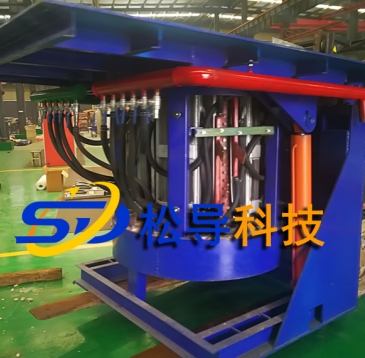- 21
- Feb
New technology of non-oxidation smelting in ZGMnl3 alkaline induction melting furnace
New technology of non-oxidation smelting in ZGMnl3 alkaline induction melting furnace

(1) Melting period of induction melting furnace
Electricity melts. Supply 60% of the power within 6-8min after starting to energize, and gradually increase the power to the maximum after the current impact stops. Ramming flux. As the charge in the lower part of the crucible melts, pay attention to ramming at any time to prevent “bridging”, and continue to add charge. Slagging. After most of the charge is melted, add slagging material (lime powder: fluorite powder = 2: -1), and cover the molten steel with slagging material. The amount of slagging material added is 1%~1.5%. Sampling and slagging. When the charge is 95% melted, take a sample for analysis, and add the rest of the charge into the furnace. After the charge is melted, reduce the power to 40%~50%, dump the slag off the furnace, and make new slag.
(2) Reduction period of induction melting furnace
deoxidation. After the slag is melted, add a deoxidizer (lime powder: aluminum powder = 1:2) to the slag surface for diffusion and deoxidation. During the deoxidation process, lime powder and fluorite powder can be used to adjust the viscosity of the slag so that the slag has good fluidity. Adjust the ingredients. Adjust the chemical composition of the molten steel according to the analysis results, and the Si content should be adjusted within 5-10 minutes before tapping.
Measure temperature and make round cup samples. Measure the temperature of the molten steel and make a round cup sample to check the deoxidation of the molten steel (or use the bending angle method to judge).
Insert calcium silicate. After the molten steel temperature reaches 15OO°C or higher (temperature measurement), 0.2% calcium silicate is inserted to further deoxidize, and then deoxidizer is added to the slag surface again. Insert aluminum, after the steel temperature reaches 1500°C or more, remove all slag, then add 0.07% cryolite powder (or slagging covering agent) and insert aluminum.
(3) Steel tapping and pouring
Steel out. After inserting the aluminum, stir the molten steel and tap the steel after power outage. After tapping, take samples in the ladle for chemical composition analysis of the finished molten steel. pouring. After tapping, add grass ash to cover the molten steel surface to prevent the molten steel from oxidizing. After the molten steel is killed for 3-5 minutes, the temperature in the ladle is 1460-1480°C, and the pouring temperature is 1340-1380°C, or lower or higher, depending on the casting requirements.
